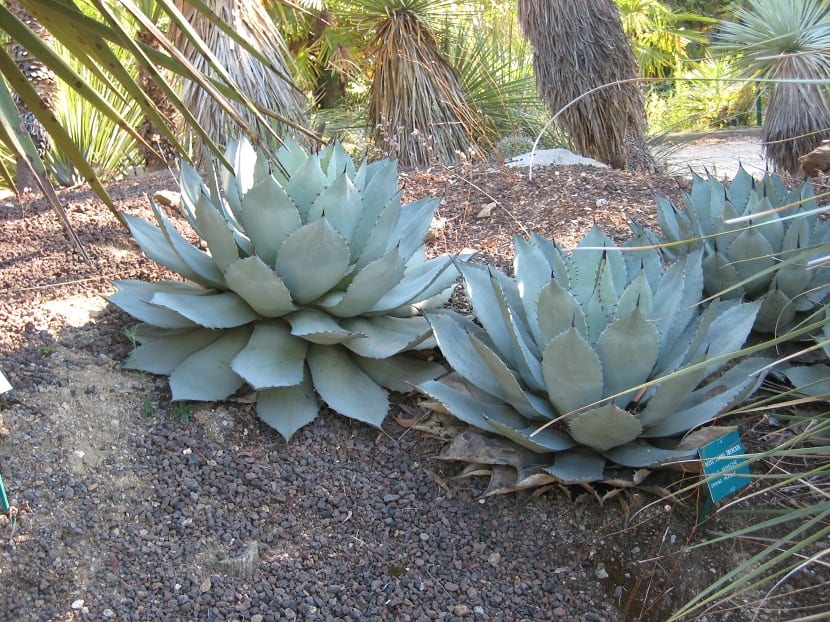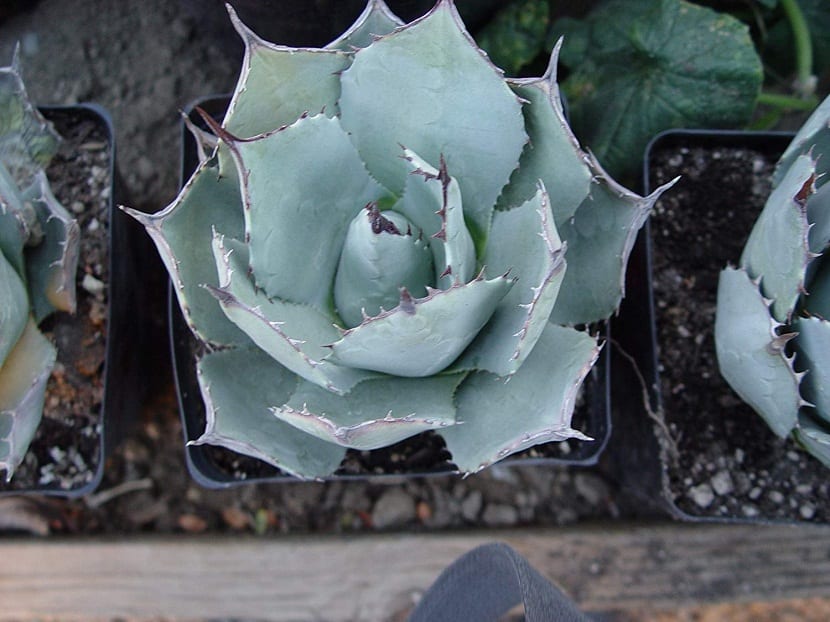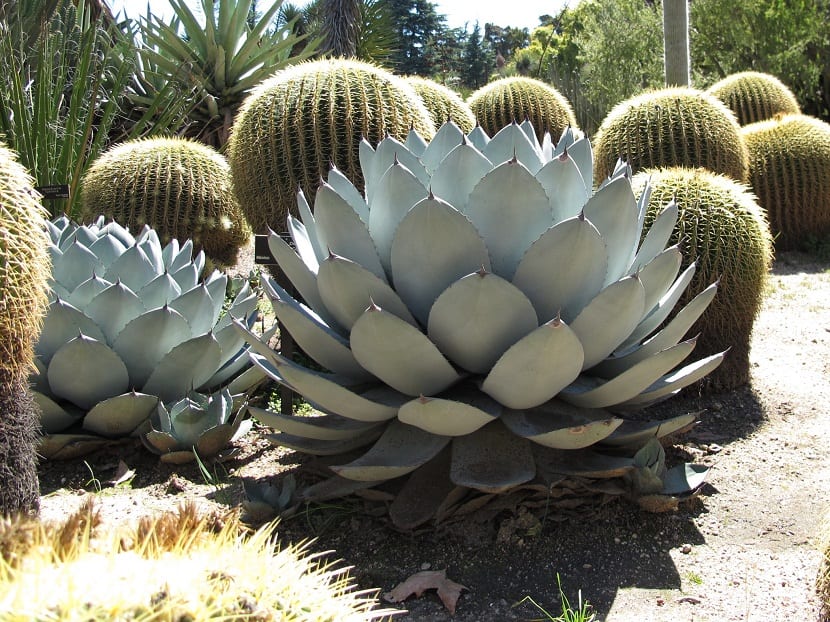
agave parryi, mezcal or penca belongs to the group of plants characteristic of northern Mexico and southwestern United States. The extreme and variable climate of this semi-desert or desert area makes this species very resistant to cold or heat.
The plants in these habitats, including the Arizona desert, are of a rustic appearance and beauty with broad leaves, thorns and varied shades of colors. Properly placed in gardening and landscaping, they change the environment with their distinctive appearance of abundant broad, rosette-shaped leaves that do not go unnoticed.
Origin of the Agave parryi

The common names by which it is also often called are agave, penca, maguey and mezcal. It is native to central North America between Mexico and the United States. This geographical point is high and desert, making the plant very resistant to cold and drought.
In the description that George Engelmann offers of the species, the following etymology is attributed to him and it is that the word Agave has its origin in the Greek Agavos. Agave was the daughter of the king of Thebes Cadmus that in an unprecedented act he murdered his son, Penteo, to avoid a greater evil. This act was considered noble and of great sacrifice for which the people admired it. Parriy was placed in honor of the renowned botanical scientist Charles Christopher Parry.
Features
There are three documented varieties of Agave parryi known as Agave parryi variety couesii, Agave parryi variety huachucensis and Agave parryi Neomexicana. All have abundant, large leaves that are close together. A plant can have up to 160 leaves with colors ranging from light green to silver gray. The leaves have spines on the sides and a stinger at the end.
Agave is an evergreen plant with evergreen leaves that can grow to about 50 centimeters high and one meter wide. The flowers are a three meter tall rod with beautiful clusters of bright yellow flowers. These flowers are hermaphroditically pollinated and use Lepidoptera and Chiroptera to do this.
Cultivation, care and diseases
The reproduction of the Agave is carried out by means of the seed. The plant dies after flowering but leaves several suckers and its development will be effective in soils with characteristics of acidic, alkaline or neutral pH. The roots prefer a soil with a loamy or sandy texture. It is necessary to keep the ground dry or slightly damp. It must be well drained, although it is drought tolerant, not waterlogged. It should be transplanted or planted in spring.
This plant is very resistant to extreme climates. When planting it, you should choose a land that exposes it directly to the sun's rays. On the other hand, it can withstand low temperatures even frost. If the plant has more humidity than recommended or is not directly exposed to solar radiation, it can contract some fungi or pests such as curculionidae (Scyphophorus acupunctatus).
Uses and properties

In its region of origin, the Agave parryi It is used for different nutritional and medicinal purposes, however, its characteristic appearance is ideal to offer an exotic element to the landscape that evokes the geographical characteristics of the American desert. From a medical point of view, the agave leaf is used as an antiseptic, diuretic and laxativeIt is very important to note that medical and self-diagnostic uses are not recommended if previously consulted by a specialist doctor.
Regarding its use in food, it is the Mexican population that takes advantage of the leaves, seeds, stems and nectar as ingredients of typical foods and beverages. One of the spices of this plant is used for the preparation of the popular tequila drink.
The contemporary product that is widely named is the Agave honeyAlthough opinions on the consequences of its consumption are very divided, it is given beneficial properties with respect to the control of cholesterol and triglycerides. On the other hand, it is known that it contains large amounts of fructose that may not be beneficial for the body.
There is much documentation that proves that Native American tribes used the Agave Parryi of many ways. The plant was edible when the leaves were young and parts of the plant were used to manufacture weapons and pigments.